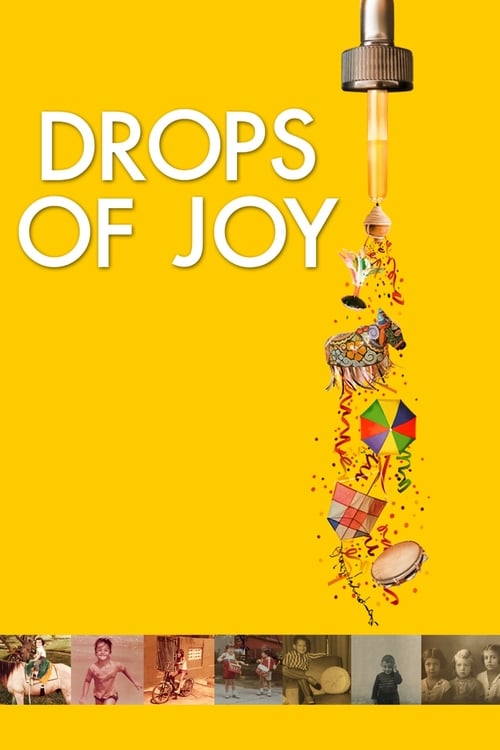
Ask Your Own Question
What is the plot?
"Drops of Joy" (2014), directed by Cacau Rhoden, is a documentary film rather than a fictional narrative, so it does not follow a traditional linear plot with characters, events, or deaths. Instead, it explores the vital theme of maintaining a playful spirit throughout life, emphasizing how society pressures adults to abandon the natural joy and creativity they had as children.
The film opens with evocative scenes that contrast the uninhibited playfulness of childhood with the often rigid, duty-bound lives of adults. Through a series of interviews, observations, and reflective moments, "Drops of Joy" presents the idea that play is not merely a frivolous activity but a serious and urgent human need. The camera captures moments of spontaneous laughter, creative expression, and joyful interaction, underscoring the emotional and psychological benefits of play.
As the documentary progresses, it delves into societal norms and pressures that compel adults to suppress their playful instincts. The narrative voice and interviewees articulate how this suppression can lead to a loss of vitality, creativity, and connection with oneself and others. The film visually contrasts scenes of adults engaged in monotonous routines with vibrant images of people rediscovering play through art, dance, and communal activities.
Key thematic revelations emerge as the documentary highlights stories of individuals who reclaim their playful nature, leading to personal growth and self-discovery. These moments are often accompanied by intimate dialogue and heartfelt reflections, such as an artist describing how embracing play revitalizes their creative process or a community leader explaining the transformative power of play in social cohesion.
The emotional core of "Drops of Joy" builds steadily, culminating in a powerful affirmation that play is essential for well-being at all ages. The film does not present conflicts, deaths, or confrontations but instead weaves a tapestry of hope and renewal. The closing scenes are visually rich with images of diverse people--from children to elders--engaging in joyful activities, symbolizing the universal and timeless nature of play.
In the final moments, the documentary leaves viewers with a poignant message: reclaiming the playful spirit is a radical act of self-care and social resistance. It challenges the audience to reconsider their own relationship with play and to resist societal pressures that diminish joy.
Because "Drops of Joy" is a thematic documentary without a conventional storyline, there are no characters who die, no plot twists, no confrontations, or climactic resolutions. Instead, its narrative arc is one of awakening and celebration of play as a profound and necessary aspect of human life.
If you want, I can provide a detailed thematic analysis or explore specific segments and interviews from the film, but a traditional linear narrative plot spoiler with deaths and confrontations is not applicable here.
More Movies Like This
Browse All Movies →What is the ending?
In the ending of "Drops of Joy," the main character, a young woman named Joy, finds closure and a sense of purpose after a series of emotional challenges. She reconciles with her estranged father, embraces her passion for art, and ultimately decides to pursue her dreams, leaving behind her past struggles.
As the film approaches its conclusion, we see Joy standing at a crossroads in her life. The scene opens with her in her small, cluttered apartment, surrounded by unfinished canvases and remnants of her past. The weight of her emotional turmoil is palpable as she reflects on her journey. The camera captures her deep breaths, a visual representation of her internal struggle.
In the next scene, Joy receives a phone call from her father, who she has not spoken to in years. The tension is thick as she hesitates to answer, her heart racing with a mix of fear and hope. When she finally picks up, the conversation is awkward at first, filled with long pauses and unspoken words. However, as they talk, the walls between them begin to crumble. Joy's father expresses his regret for the past, and Joy, with tears in her eyes, finds the courage to forgive him. This moment is pivotal, showcasing her growth and willingness to let go of resentment.
Following this emotional reunion, Joy is seen in her art studio, surrounded by vibrant colors and canvases. The atmosphere shifts as she begins to paint with renewed vigor. The camera zooms in on her brush strokes, each one filled with emotion and purpose. This scene symbolizes her reclaiming her identity and passion, a stark contrast to the earlier scenes of doubt and despair.
The climax of the film occurs during an art exhibition where Joy showcases her work for the first time. The gallery is filled with people, and the energy is electric. Joy stands nervously by her paintings, her heart pounding as she anticipates the reactions of the attendees. As people begin to admire her work, Joy's face lights up with a mixture of pride and disbelief. The camera captures her interactions with the guests, highlighting her transformation from a timid artist to a confident creator.
In the final moments of the film, Joy steps outside the gallery, taking a deep breath of the cool night air. She looks up at the stars, a smile breaking across her face as she realizes that she has finally found her place in the world. The film closes with a shot of her walking away from the gallery, her silhouette framed against the city lights, symbolizing her journey towards a brighter future.
As for the fate of the main characters, Joy emerges as a stronger individual, having reconciled with her father and embraced her artistic dreams. Her father, having taken the first step towards mending their relationship, is left with a sense of hope for the future. The film ends on a note of optimism, suggesting that healing and personal growth are possible, even after deep emotional wounds.
Is there a post-credit scene?
"Drops of Joy," produced in 2014, does not feature a post-credit scene. The film concludes its narrative without any additional scenes after the credits roll, focusing instead on the emotional resolution of the characters and the themes of hope and perseverance that are central to the story. The ending leaves viewers with a sense of closure, emphasizing the journey of the main characters rather than teasing future developments or additional content.
What motivates the main character, Joy, to pursue her dream of becoming a successful chef?
Joy is driven by her passion for cooking and her desire to create a better life for herself and her family. Throughout the film, her internal struggles with self-doubt and the pressure of familial expectations push her to prove herself in the culinary world.
How does Joy's relationship with her mother influence her journey?
Joy's relationship with her mother is complex; her mother is both a source of inspiration and a source of conflict. While her mother encourages her to follow her dreams, she also imposes traditional expectations that create tension, forcing Joy to navigate her own identity and aspirations.
What role does the character of Marco play in Joy's development?
Marco serves as both a mentor and a love interest for Joy. His encouragement and belief in her talent help her gain confidence, while their romantic relationship adds emotional depth to her journey, highlighting the balance between personal and professional aspirations.
What challenges does Joy face in the culinary competition, and how does she overcome them?
Joy faces numerous challenges in the culinary competition, including fierce rivals, self-doubt, and the pressure to succeed. She overcomes these obstacles by relying on her creativity, resilience, and the support of her friends and family, ultimately learning to trust her instincts.
How does the theme of family impact Joy's decisions throughout the film?
Family plays a crucial role in Joy's decisions, as she often grapples with the expectations placed upon her by her family. Her desire to honor her family's legacy while pursuing her own dreams creates a constant internal conflict, shaping her choices and driving her character development.
Is this family friendly?
"Drops of Joy," produced in 2014, is generally considered a family-friendly film. However, it does contain some scenes and themes that may be potentially objectionable or upsetting for children or sensitive viewers.
-
Emotional Struggles: The film explores themes of loss and grief, which may be intense for younger audiences. Characters experience moments of deep sadness and reflection that could be heavy for sensitive viewers.
-
Conflict and Tension: There are scenes of family conflict that may be uncomfortable, showcasing arguments or misunderstandings that could resonate with real-life family dynamics.
-
Health Issues: The film touches on health-related challenges faced by characters, which might be distressing for viewers who have experienced similar situations in their own lives.
-
Dramatic Moments: Certain scenes may involve heightened emotional stakes, such as moments of despair or anxiety, which could be unsettling for children.
Overall, while the film carries a positive message about resilience and joy, its emotional depth may require parental guidance for younger viewers.






















